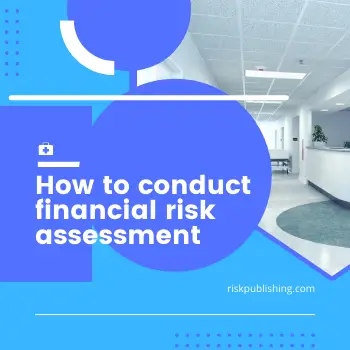Risk assessment methodology, an aspect of any risk management process, encompasses various approaches to determining the potential impact of identified risks.
This comprehensive guide aims to elucidate the different methodologies, spanning from quantitative, qualitative, semi-quantitative, asset-based, and vulnerability-based to threat-based.
Each methodology, distinct in its approach, bears its own strengths and limitations, thus necessitating careful selection based on the specific context and objectives of the risk assessment.
The subsequent sections delve into the nuances of each methodology, providing a detailed analysis of their application, usefulness, and potential drawbacks.
This exploration endeavors to equip readers with the necessary knowledge to make informed decisions when choosing the most suitable risk assessment methodology for their needs and circumstances.

What is a Risk Assessment Methodology
A risk assessment methodology is a systematic approach used to identify, evaluate, and manage potential hazards or risks in a given environment, playing a crucial role in the decision-making process.
This methodology is a key component of risk management, as it helps organizations prioritize their resources effectively.
The risk assessment process typically involves a qualitative method, which involves subjective judgment based on expert opinion, and a quantitative method, which is numerical and involves statistical data.
These methods form the basis of different types of risk analysis, which can range from simple hazard identification to complex risk modelling.
The purpose of the methodology is not only to identify potential risks but also to estimate potential impacts, thereby aiding in the development of robust mitigation strategies.
Business associates should take corrective actions to address negative risks and capitalize on positive risks. A list of risks can help with a deeper understanding and effects analysis, especially for core elements such as remote access, the supply chain, and the development life cycle.
Senior management at financial institutions should ensure that additional controls are in place to meet acceptable levels of risk at the organizational and executive levels.
A detailed report with additional guidance can provide a more accurate risk assessment and help determine risk acceptability criteria, including simple risk assessment and residual risk acceptance criteria.
Companies should consider risk avoidance and various risk treatment options to manage information security risk. Sources for risk analysis, including bicyclist risk assessment methods and critical risk elements, should be incorporated into the project risk assessment report.
The highest-level risks should be identified, with a plan for verification and effective action plans. Implementation plans and security assessment plans should be included in the security plan, with consideration for the impact cost and potential threat events.
Framework and guidance documents can be helpful for larger companies to establish a company culture that prioritizes risk management and addresses high-risk failure modes.
Experts recommend considering potential failures during development and using a digital template for risk assessments. Finally, it’s important to proofread and check for spelling, grammar, and punctuation errors before sharing or downloading the document.d Template
Quantitative
Quantitative approaches to evaluating potential hazards employ numerical data and statistical methods, providing precision and objectivity in the analysis.
This type of risk assessment methodology, or quantitative risk assessment, uses specific metrics such as risk matrix, risk levels, and risk values to measure a given risk’s potential consequences and financial impact.
– Quantitative Risk Assessment:
– Risk Matrix: This tool prioritizes risks based on their likelihood and potential impact, thus enabling more focused risk management.
– Risk Levels and Values: These metrics provide numerical risk estimates, which can be used to determine the severity and financial implications of potential risks.
The quantitative risk analysis process is a critical component of comprehensive risk management, offering an empirical approach to understanding and mitigating risks.
Qualitative
Contrasting with the numeric approach, qualitative strategies involve a more subjective and interpretive evaluation of potential hazards, relying on expert judgment rather than strictly numerical data.
The qualitative risk assessment method is often employed to identify and categorize kinds of risks in a less structured, more exploratory manner.
The qualitative assessment is central to effective risk communication as it allows for nuanced descriptions of potential hazards and their effects.
Employing a qualitative analysis when assessing risk provides a comprehensive understanding of the various aspects of potential hazards, including their causes, impacts, and possible mitigation strategies.
In essence, the qualitative approach to risk assessment offers an in-depth, interpretive insight into potential risks beyond what can be ascertained from a purely numerical evaluation.
Semi-Quantitative
Semi-quantitative strategies offer a unique approach to investigating potential hazards by bridging the gap between numeric and interpretive evaluations.
This risk assessment guide outlines the semi-quantitative method, which combines aspects of both qualitative and quantitative techniques to provide a more comprehensive guide to risk assessment methodology.
It allows for evaluating risks based on numerical scores and descriptive categories, aiding the risk management process.
| Potential Threats | Severity of Consequences |
|---|---|
| Low | Minor |
| Medium | Significant |
| High | Severe |
| Very High | Catastrophic |
Semi-quantitative methods facilitate risk mitigation strategies by assigning a numerical value to the severity of potential threats. These methods improve the understanding of the potential consequences, enhancing the ability to manage and mitigate the threats.
Asset-Based
Asset-based approaches are of utmost importance in the field of hazard investigation. They provide a focused evaluation and identification of assets susceptible to potential threats.
This methodology is typically employed during the risk assessment phase of a formal risk assessment process.
The approach entails systematically identifying potential hazards associated with the asset and analyzing the residual risks. This data is then used to populate a risk management file, which serves as a comprehensive repository of risks associated with the asset.
Asset-based risk assessment methodology provides a structured framework for identifying potential risks and formulating appropriate mitigation strategies.
The method’s inherent focus on asset-specific hazards ensures a comprehensive and detailed risk profile, aiding overall risk management.

Vulnerability-Based
Shifting the focus from assets to vulnerabilities, the vulnerability-based approach to hazard investigation concentrates on the weaknesses that potential threats could exploit.
This security risk assessment method emphasizes identifying vulnerabilities within a system, which can be subjected to unauthorized access or potential incidents.
This risk analysis approach necessitates an in-depth evaluation of the system’s security controls and their effectiveness in mitigating risks. It involves determining the potential impact levels of various threats exploiting existing vulnerabilities.
The ultimate goal is to strengthen these weak points to prevent any potential breaches, thus enhancing the overall security posture.
This proactive measure is crucial in the ever-evolving landscape of security threats, ensuring a comprehensive and robust risk management strategy.
Threat-Based
Contrasting the vulnerability-based approach, the threat-based perspective of analyzing security prioritizes potential dangers that could compromise information systems’ integrity, confidentiality, or availability.
This methodology focuses not only on the assessment of risk but also on the business impact analysis of potential security incidents.
The threat-based approach involves rigorous penetration testing to simulate security risks and identify possible weak points. It anticipates environmental threats that can negatively affect the system and measures to prevent inappropriate access.
Understanding potential threats is vital in this approach as it helps create effective risk mitigation strategies.
Therefore, the threat-based methodology provides a more comprehensive and strategic approach to risk assessment in information systems, ensuring a secure and stable system.
Choosing the Right Methodology
Determining the most suitable approach for evaluating information system security necessitates a thorough understanding of the distinct characteristics and benefits of vulnerability and threat-based methodologies.
Selecting a comprehensive guide to risk assessment methodology is pivotal in the risk management cycle. It is the cornerstone for achieving an effective risk treatment process.
Factors influencing the choice of methodology include the nature of the entity undergoing evaluation, the resources available, and the desired level of detail in the risk evaluation.
Scalable risk assessment methods provide flexibility, accommodating varying scopes and complexities.
The chosen methodology’s sophistication level should match the system’s complexity under scrutiny.
Therefore, choosing the right methodology is a vital step in the approach to risk management, significantly influencing the effectiveness of the risk evaluation.
Frequently Asked Questions
What are the necessary qualifications to conduct a risk assessment?
Conducting a risk assessment necessitates a thorough understanding of the subject matter, analytical skills, and proficiency in data interpretation.
Relevant qualifications may include degrees in risk management, statistics, or related fields, supplemented by professional experience.
How frequently should a risk assessment be conducted in a business environment?
The frequency of conducting a risk assessment in a business environment depends on various factors, such as changes in operational processes, the introduction of new equipment, or after an incident or accident.
What is the typical cost associated with conducting a comprehensive risk assessment?
The cost of conducting a comprehensive risk assessment can vary widely, dependent on factors such as the industry, size of the organization, and complexity of operations. Typically, it ranges from $10,000 to $50,000.
How does the risk assessment methodology change in different industries?
Risk assessment methodologies vary across industries due to differing risk factors and regulatory requirements. Industries with higher inherent risks, such as mining or construction, may employ more robust and thorough assessment techniques.
What are some common mistakes to avoid when implementing a risk assessment methodology?
Common mistakes when implementing a risk assessment methodology include: overlooking potential risks, failing to update risk assessments regularly, not involving all stakeholders, and neglecting to incorporate risk mitigation strategies into business planning.

Conclusion
Knowing the pros and cons of each risk assessment method is crucial for making the right decision.
Quantitative, qualitative, semi-quantitative, asset-based, vulnerability-based, and threat-based methodologies each offer distinct advantages for different contexts.
It is essential to select a methodology that matches the precise needs of the risk assessment to guarantee a complete, precise, and valuable assessment of probable risks.

Chris Ekai is a Risk Management expert with over 10 years of experience in the field. He has a Master’s(MSc) degree in Risk Management from University of Portsmouth and is a CPA and Finance professional. He currently works as a Content Manager at Risk Publishing, writing about Enterprise Risk Management, Business Continuity Management and Project Management.

